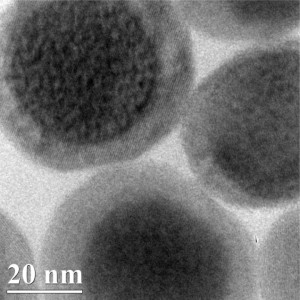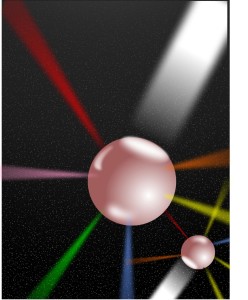Having just attended a talk on Robotics and Rehabilitation which included a segment on Robo Ethics, news of an art project where an autonomous bot (robot) is set loose on the darknet to purchase goods (not all of them illegal) was fascinating in itself (it was part of an art exhibition which also displayed the proceeds of the darknet activity). But things got more interesting when the exhibit attracted legal scrutiny in the UK and occasioned legal action in Switzerland.
Here’s more from a Jan. 23, 2015 article by Mike Masnick for Techdirt (Note: A link has been removed),
… some London-based Swiss artists, !Mediengruppe Bitnik [(Carmen Weisskopf and Domagoj Smoljo)], presented an exhibition in Zurich of The Darknet: From Memes to Onionland. Specifically, they had programmed a bot with some Bitcoin to randomly buy $100 worth of things each week via a darknet market, like Silk Road (in this case, it was actually Agora). The artists’ focus was more about the nature of dark markets, and whether or not it makes sense to make them illegal:
The pair see parallels between copyright law and drug laws: “You can enforce laws, but what does that mean for society? Trading is something people have always done without regulation, but today it is regulated,” says ays [sic] Weiskopff.
“There have always been darkmarkets in cities, online or offline. These questions need to be explored. But what systems do we have to explore them in? Post Snowden, space for free-thinking online has become limited, and offline is not a lot better.”
Interestingly the bot got excellent service as Mike Power wrote in his Dec. 5, 2014 review of the show. Power also highlights some of the legal, ethical, and moral implications,
The gallery is next door to a police station, but the artists say they are not afraid of legal repercussions of their bot buying illegal goods.
“We are the legal owner of the drugs [the bot purchased 10 ecstasy pills along with a baseball cap, a pair of sneaker/runners/trainers among other items] – we are responsible for everything the bot does, as we executed the code, says Smoljo. “But our lawyer and the Swiss constitution says art in the public interest is allowed to be free.”
The project also aims to explore the ways that trust is built between anonymous participants in a commercial transaction for possibly illegal goods. Perhaps most surprisingly, not one of the 12 deals the robot has made has ended in a scam.
“The markets copied procedures from Amazon and eBay – their rating and feedback system is so interesting,” adds Smojlo. “With such simple tools you can gain trust. The service level was impressive – we had 12 items and everything arrived.”
“There has been no scam, no rip-off, nothing,” says Weiskopff. “One guy could not deliver a handbag the bot ordered, but he then returned the bitcoins to us.”
The exhibition scheduled from Oct. 18, 2014 – Jan. 11, 2015 enjoyed an uninterrupted run but there were concerns in the UK (from the Power article),
A spokesman for the National Crime Agency, which incorporates the National Cyber Crime Unit, was less philosophical, acknowledging that the question of criminal culpability in the case of a randomised software agent making a purchase of an illegal drug was “very unusual”.
“If the purchase is made in Switzerland, then it’s of course potentially subject to Swiss law, on which we couldn’t comment,” said the NCA. “In the UK, it’s obviously illegal to purchase a prohibited drug (such as ecstasy), but any criminal liability would need to assessed on a case-by-case basis.”
Masnick describes the followup,
Apparently, that [case-by[case] assessment has concluded in this case, because right after the exhibit closed in Switzerland, law enforcement showed up to seize stuff …
!Mediengruppe Bitnik issued a Jan. 15, 2015 press release (Note: Links have been removed),
«Can a robot, or a piece of software, be jailed if it commits a crime? Where does legal culpability lie if code is criminal by design or default? What if a robot buys drugs, weapons, or hacking equipment and has them sent to you, and police intercept the package?» These are some of the questions Mike Power asked when he reviewed the work «Random Darknet Shopper» in The Guardian. The work was part of the exhibition «The Darknet – From Memes to Onionland. An Exploration» in the Kunst Halle St. Gallen, which closed on Sunday, January 11, 2015. For the duration of the exhibition, !Mediengruppe Bitnik sent a software bot on a shopping spree in the Deepweb. Random Darknet Shopper had a budget of $100 in Bitcoins weekly, which it spent on a randomly chosen item from the deepweb shop Agora. The work and the exhibition received wide attention from the public and the press. The exhibition was well-attended and was discussed in a wide range of local and international press from Saiten to Vice, Arte, Libération, CNN, Forbes. «There’s just one problem», The Washington Post wrote in January about the work, «recently, it bought 10 ecstasy pills».
What does it mean for a society, when there are robots which act autonomously? Who is liable, when a robot breaks the law on its own initiative? These were some of the main questions the work Random Darknet Shopper posed. Global questions, which will now be negotiated locally.
On the morning of January 12, the day after the three-month exhibition was closed, the public prosecutor’s office of St. Gallen seized and sealed our work. It seems, the purpose of the confiscation is to impede an endangerment of third parties through the drugs exhibited by destroying them. This is what we know at present. We believe that the confiscation is an unjustified intervention into freedom of art. We’d also like to thank Kunst Halle St. Gallen for their ongoing support and the wonderful collaboration. Furthermore, we are convinced, that it is an objective of art to shed light on the fringes of society and to pose fundamental contemporary questions.
This project brings to mind Isaac Asimov’s three laws of robotics and a question (from the Wikipedia entry; Note: Links have been removed),
The Three Laws of Robotics (often shortened to The Three Laws or Three Laws, also known as Asimov’s Laws) are a set of rules devised by the science fiction author Isaac Asimov. The rules were introduced in his 1942 short story “Runaround”, although they had been foreshadowed in a few earlier stories. The Three Laws are:
A robot may not injure a human being or, through inaction, allow a human being to come to harm.
A robot must obey the orders given it by human beings, except where such orders would conflict with the First Law.
A robot must protect its own existence as long as such protection does not conflict with the First or Second Law.
Here’s my question, how do you programme a robot to know what would injure a human being? For example, if a human ingests an ecstasy pill the bot purchased, would that be covered in the first law?
Getting back to the robot ethics talk I recently attended, it was given by Ajung Moon (Ph.D. student at the University of British Columbia [Vancouver, Canada] studying Human-Robot Interaction and Roboethics. Mechatronics engineer with a sprinkle of Philosophy background). She has a blog, Roboethic info DataBase where you can read more on robots and ethics.
I strongly recommend reading both Masnick’s post (he positions this action in a larger context) and Power’s article (more details and images from the exhibit).

